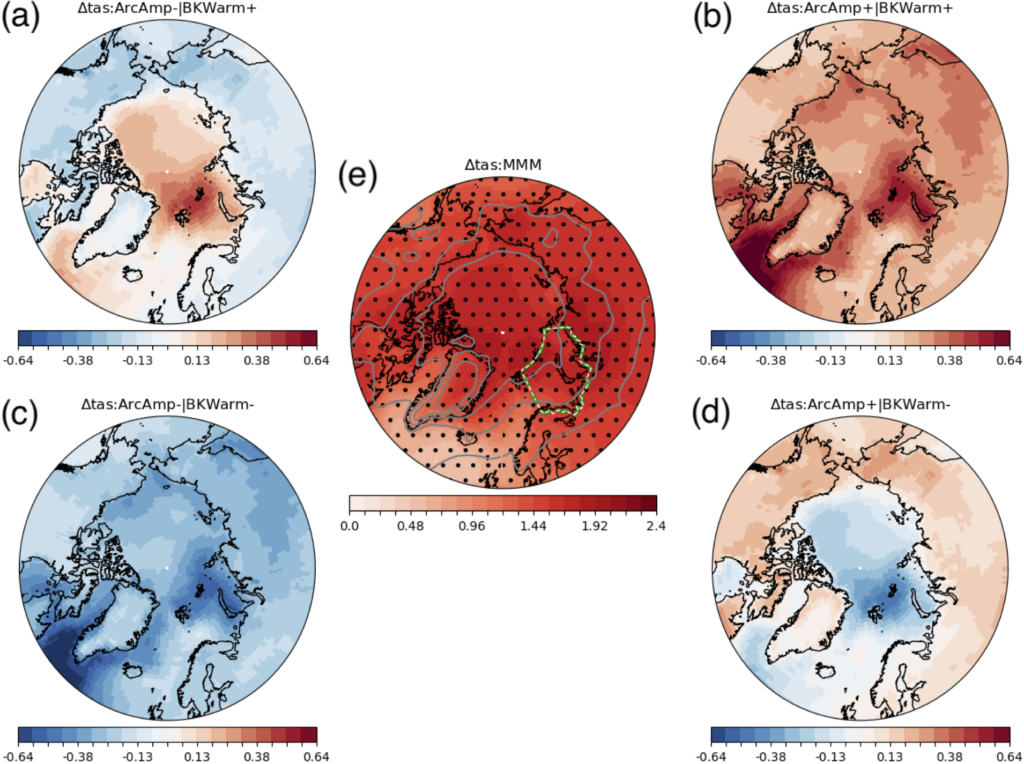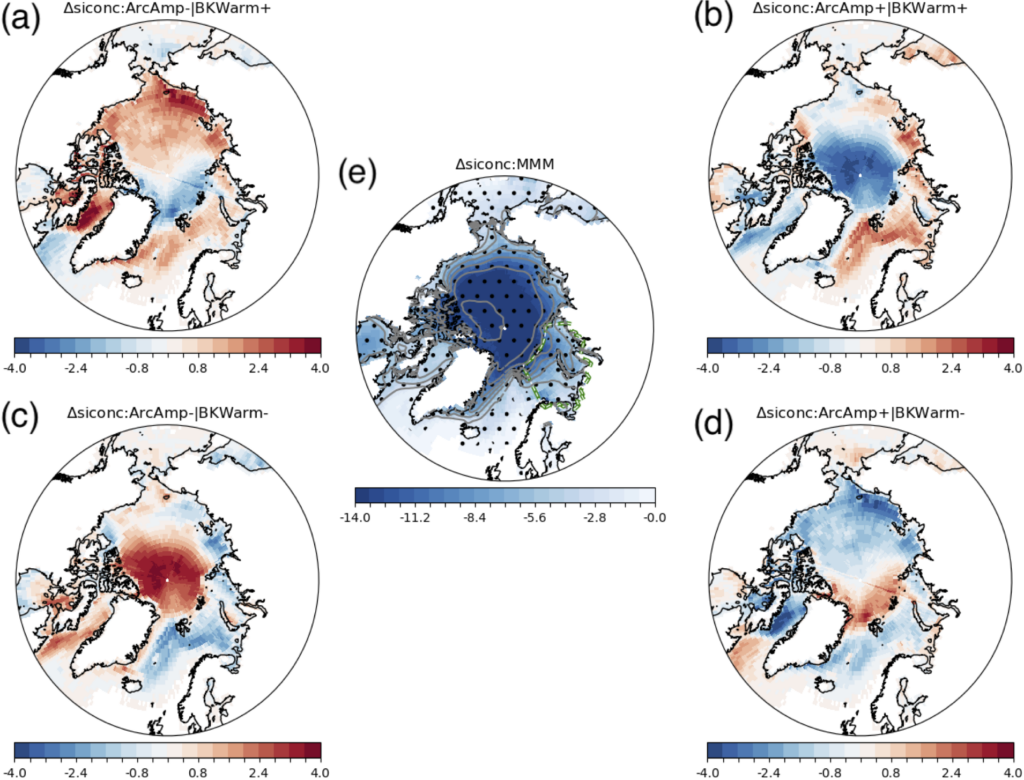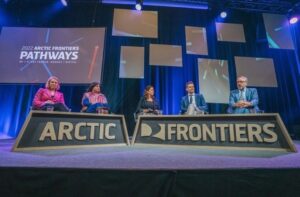Marine Ecosystems
Climate change threatens Arctic marine ecosystems.
Arctic and sub-Arctic marine ecosystems are an integral part of the Earth system. They perform a range of local and globally important ecosystem services, such as biodiversity, nutrient and biogeochemical cycling, climate regulation, fisheries, and wildlife tourism, that support local and global human communities and economies. Together with direct human impacts (such as fishing, pollution, tourism, and shipping), climate change is already causing changes in Arctic environments (e.g. changes in wind patterns, the cryosphere, ocean acidification, ocean circulation, air and sea temperatures).
Continued changes threaten the habitats of key species, which have already resulted in shifts in species distribution and abundance and community composition. These, in turn, will affect the structure and functioning of Arctic ecosystems, including, for example, the survival of iconic and keystone species (such as polar bears, narwhals and whales), the future availability of living resources to local communities and commercial fisheries and the ability of these ecosystems to regulate climate by transferring carbon to the deep ocean, where it may be stored for hundreds of years.
These threats will affect the complex life-histories and distributions of pelagic (e.g. phytoplankton, zooplankton, fish, squid) and benthic communities (e.g. crustaceans, worms, molluscs, starfish, sea urchins, corals, sponges, bryozoans). Changes in these communities will have implications for air-breathing higher predators (including seabirds, seals, polar bears, walrus, and whales, including narwhals) and commercially important fish stocks (including cod, capelin, herring), across a range of spatial and temporal scales. Changes to the Arctic system may affect variables such as carbon and nutrient cycling, ability of indigenous communities to live and access resources on their land and waters, biodiversity, and availability and access of marine living resources to international fisheries.
The magnitude and direction of physical and habitat changes are likely to differ between regions across the Arctic, and hence the responses of species, populations, and food webs may also be regionally variable.


Storylines
Climate modellers, marine ecologists, and ecological modellers within PolarRES have been working together to choose an appropriate sub-set of the latest Earth System Models to develop highly spatially and temporally resolved climate and coupled climate-ocean-ice models (both hindcast and forecast) for the Arctic region, using the storylines approach.
These high-resolution climate models are nearing completion and will produce a range of plausible future scenarios of Arctic climate change out to 2100, including;
- Storyline A: Strong Arctic amplification with a weak warming of the Barent-Kara sea
- Storyline D: Weak Arctic amplification with a strong warming of the Barent-Kara sea
When the forecast models are ready, ecologists will couple these climate models to ecological models to generate projections of future changes in the distribution and abundance of key zooplankton species – copepods – across the Arctic. The hindcast climate models have now been completed and ecologists have been using these to develop relationships between historical distributions of copepods in association with the marine environment. Once the forecast models are ready, they will be used to generate (ecological niche) models to examine the future changes in copepods. Copepods are an important component of Arctic food webs, transferring energy from the phytoplankton they consume to a range of predators, including other zooplankton, fish, and whales. They also play a vital role in transferring carbon to the deep ocean (in their carbon-rich lipid sacs), thereby helping to regulate our climate.
Being able to predict the future dynamics of these tiny creatures, upon which our societies and Earth System depend, can help refine our understanding of the global carbon cycle, allowing policy makers and communities to develop sound decisions to adapt and respond to the impact of climate change in the region.
Physical changes emerging from our 4 storylines suggest strong regional contrast in ocean primary production between storylines. For instance, enhanced loss in sea-ice cover in the Pacific or Atlantic sector of the Arctic (storyline A and C) suggest a possible increase in primary productivity in those areas due to greater light availability in early summer. Likewise, a greater warming of the near-surface / sea-surface temperature over the Barents-Kara Sea in storylines A/B may boost primary production there compared to storylines C/D.

